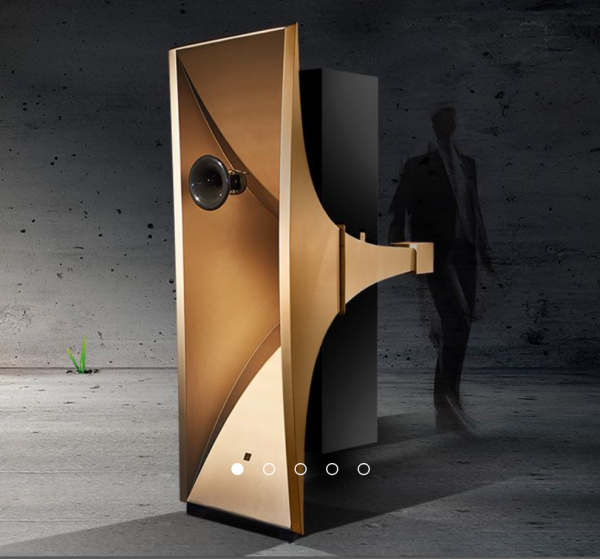From my Munich 2018 Horn Report:
On Sunday I stumbled across the Tune Audio room myself, and I decided to walk in. I see an almost coffin-size box made of blonde wood with a horn on a bracket attached to one side of the box, and I see an all-black box of similar size, covered with a grill, just behind the first box.
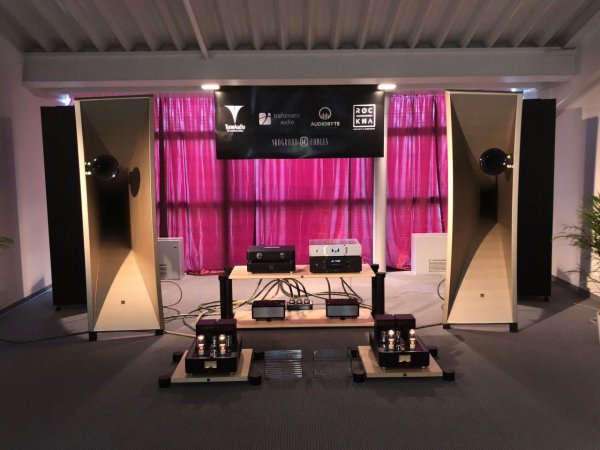
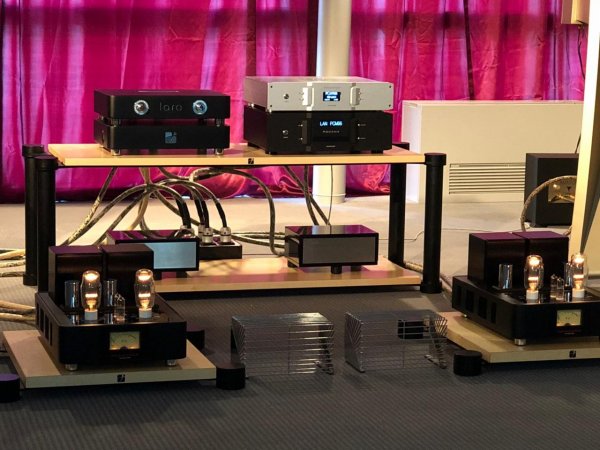
After just a minute of listening I asked myself, “What is this? What am I hearing?” STOP THE PRESSES!!! This was an Oh My God sonic revelation! I instantly texted Kedar to ask him to come right over to verify what I was hearing!
The exhibitor was playing some jazz track. I heard very realistic instrumental tone and an unexpectedly open sound -- very similar to what I hear from planar loudspeakers. I heard a box-less sound - - the same sound for which I value planar speakers. Often with a component one is not aware of a sonic defect unless one later is conscious of its absence in another component. I can enjoy conventional box speakers, but it is not until I hear again a box-less sound that I hear what I truly enjoy.
The small horn attached by a bracket on the side of the open box with seemingly no parallel sides handles 1100Hz and up. The open box reproduces between 120Hz and 1100Hz, and the closed, black woofer just behind the open box handles the range of 120Hz and down.
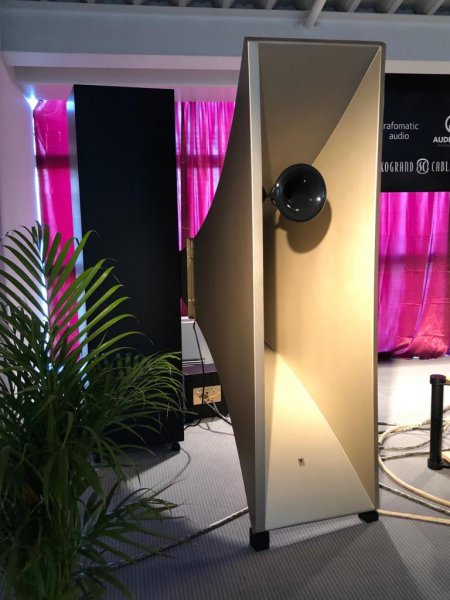
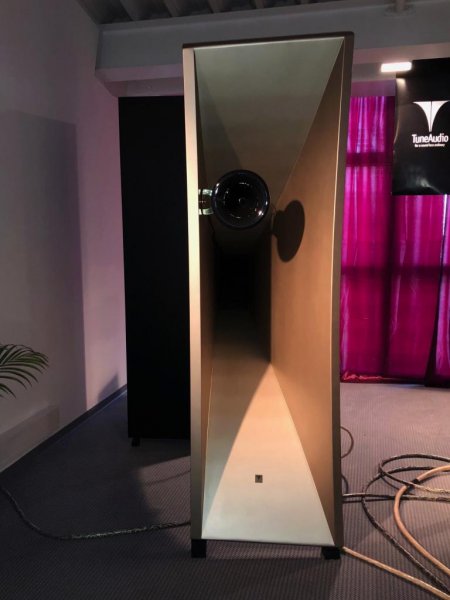
After listening to selections of instrumental jazz, jazz vocals, classical, rock and pop I conclude that this is the single best horn speaker I personally have ever heard. Brass instruments were reproduced with the breathiness and the sensation of air being physically moved which makes horns my favorite speaker for jazz.
Called the Avaton, I found this flagship, yet relatively simply, three-way speaker from Tune Audio to be more natural sounding and more musical and more coherent than the Cessaro Zeta, which costs about three times the price of the Avaton. (Of course the Tune Audio black woofer box cannot reproduce the subterranean frequencies with remotely the extension or the sound pressure level of four 18” cones or a wall-length array of basshorns.)
While I still feel that there is something about horns which deprives them from reproducing vocals as authentically as other speaker types, I think this Avaton reproduced vocals at least as well as any other horn speaker I have heard.
With sympathetic musical selections I suspect the Living Voice Olympian can sound more natural than anything else. But in comparison to the Avaton, the Living Voice sounds more like a box speaker than it does like a planar speaker. The Avaton is the first horn speaker I have heard which reminds me of the sound of planars (and for me that is a highly desirable attribute).
Winding up the show on Sunday I certainly was not expecting to find something amazing. But there it was for the hearing. Before I left the room I told Manolis Proestakis, the Founder of Tune Audio, that I heard the Anima twice before, and that I really did not like it, but that his Avaton is a true sonic achievement. If I listened primarily to jazz the Avaton is the horn speaker I would purchase.
Tune Audio Avaton Specifications
System Sensitivity: 105db
Impedance Nominal: 8ohms
Crossover: 120Hz & 1100Hz
Recommended Power: > 3watt
Recommended Amplifiers: Low-mid powered tube SETs or solid state Class A amplifiers.
Low or no feedback designs are recommended.
Recommended Placement: Near wall or room corner placement is desirable.
Preferred clearance between speakers: >2m
Listening Distance: >4m
Dimensions: H210cm, W102cm, D210cm
Weight: 75Kg each
